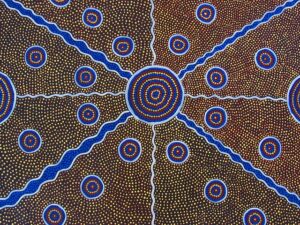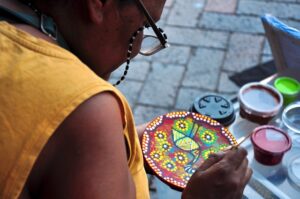 Australian art might not be the kind that art connoisseurs rank high as a favorite, because not many found its natural topography impressive and inspiring. Yet, the numerous world class national and state museums and art galleries give proof that the country is proud of its local visual arts, particularly the striking pieces of art created by the country’s first National People. In fact, different Australian regions celebrate its long art history by way of feasts and festivals.
Australian art might not be the kind that art connoisseurs rank high as a favorite, because not many found its natural topography impressive and inspiring. Yet, the numerous world class national and state museums and art galleries give proof that the country is proud of its local visual arts, particularly the striking pieces of art created by the country’s first National People. In fact, different Australian regions celebrate its long art history by way of feasts and festivals.
After all, the continent has the most diverse landscape features on earth, like the snow-capped Australian Alps, the wild-life rich tropical rainforests, and multifarious coral reefs that serve as habitats for various marine life. Not to forget the stunning beaches as well as outbacks and deserts full of unique wildlife. It’s hard to believe that only a few local artists have been inspired by Australia’s landscape.
Understanding Aussie Art History
 Actually, an understanding of Australian art will take readers to its roots, which stems from the country’s aboriginal or First National people. The period goes as far back as 20,000 years ago, which was established through the first recorded rock art. The man-made rock formation was created by aborigines who decided to make Australia their permanent home.
Actually, an understanding of Australian art will take readers to its roots, which stems from the country’s aboriginal or First National people. The period goes as far back as 20,000 years ago, which was established through the first recorded rock art. The man-made rock formation was created by aborigines who decided to make Australia their permanent home.
Archaeologists also found artworks made from
natural fibers and body painting materials and tools used in rituals and in creating art. Symbols form a large part of Australian cultural artistry as they are used for storytelling and in marking historical events.
Typical to any former colony, much of the discussions promoting and propagating Australian culture and its arts had delved mainly on those that formed part of the British colonisation projects. Nevertheless, Australian aboriginal arts were given recognition as representations of the country’s artistic and cultural heritage, during the 20th century and are now included in school curriculums.
European influence dominated the art brought over by the British Empire, using mostly Australia’s topographical features as art themes. Still, visual arts in the “land down under” progressed during the 19th century from realist, to impressionists and to art nouveau as means of depicting not only landscapes but also of Australia’s history and its people.
History of Australia’s Topography
The reason why early Australian artists were engrossed with Australian landscape and its elements is because of tne abundance of trees, sand, grass and surf in all regions, being the result of the continent’s long landscape history.
Additionally, the landscape was originally located near the South Pole during the Permian Period. However, Australia’s land mass was hit by large ice caps and as a result, parts of Australia formed sedimentary basins, which through the years had given the soils their poor quality and shallow spread.
Actually, this is also one of the reasons why construction of buildings in the country need chemical grout injection to fill voids that could cause structural foundations to sink.



